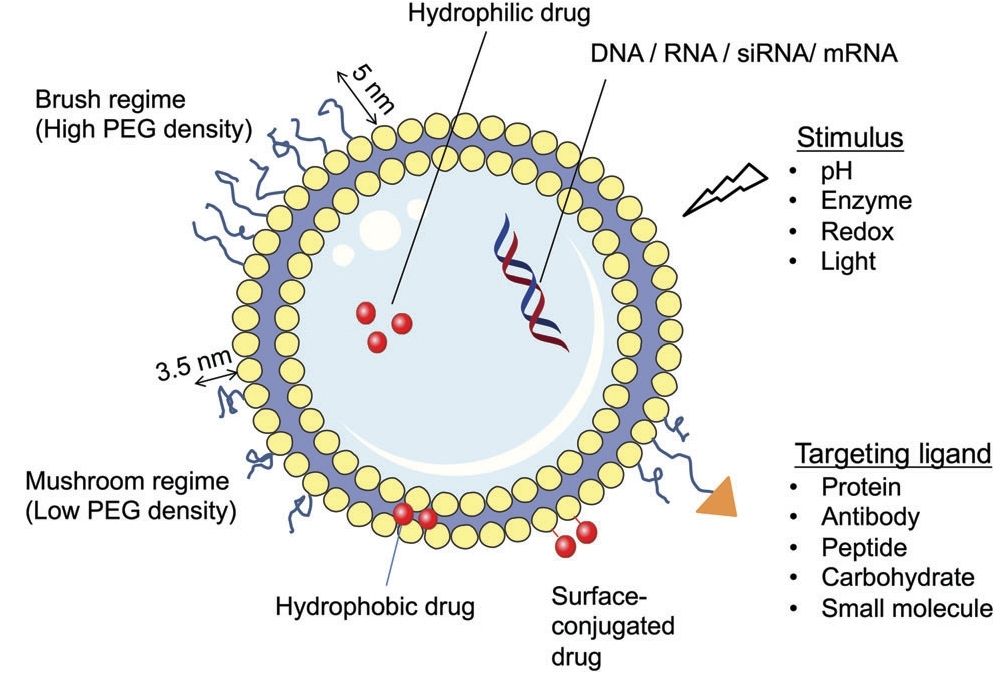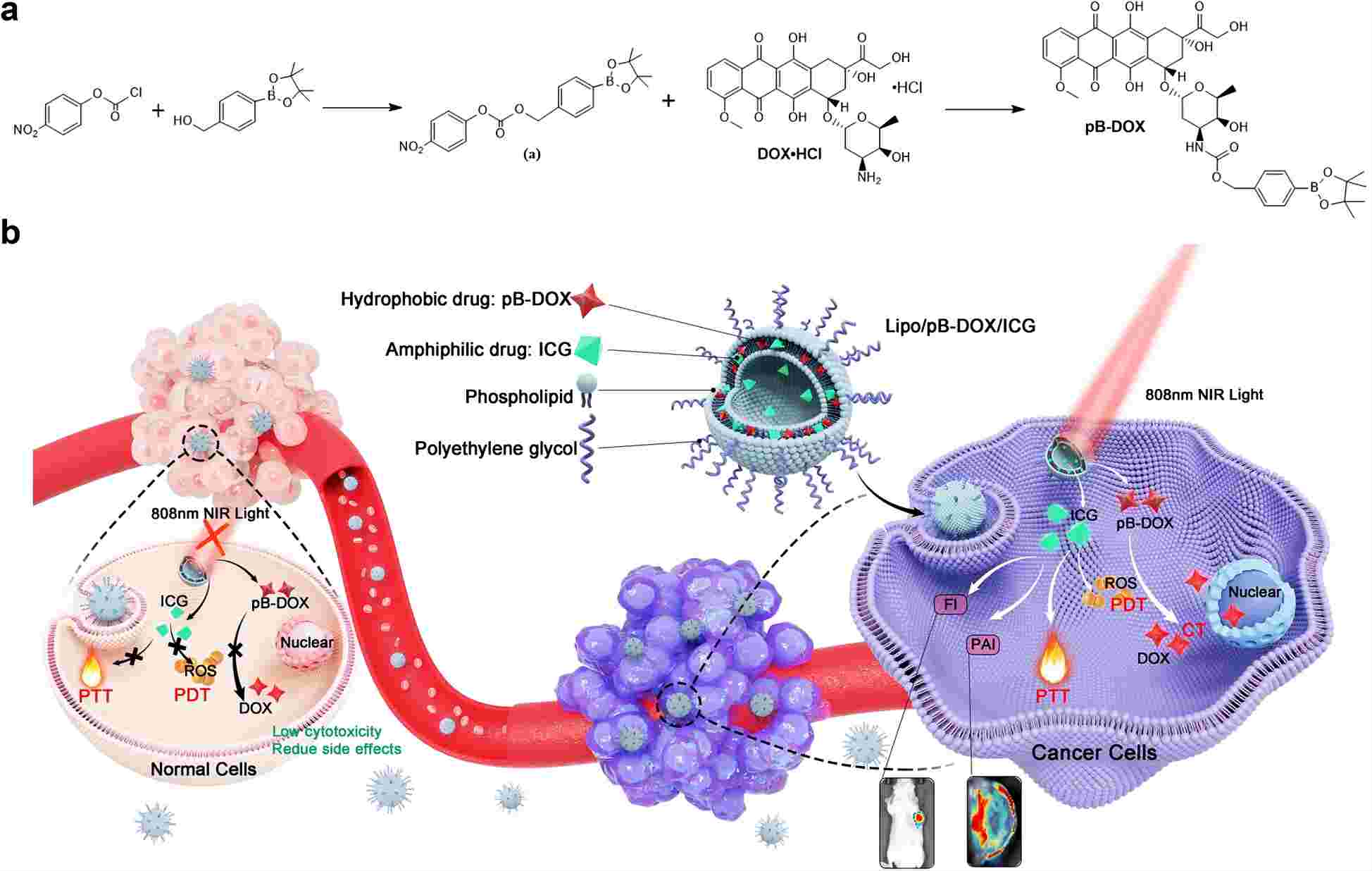Custom Environmentally Responsive Liposome Service
Inquiry
Liposomes are considered one of the most successful nanocarriers, usually composed of phospholipids, cholesterol, and drug components. Although traditional liposomes have made great progress, emerging shortcomings still affect the therapeutic index. Stimulus-responsive nano-delivery systems are increasingly being developed to improve drug delivery efficiency. With our expertise and technology accumulation in the field of liposomes, the scientific research team at CD Formulation can provide professional solutions for customizing and characterizing diverse environmentally Responsive Liposome, including magnetic responsive liposomes, PH-sensitive liposomes, photosensitive liposomes, temperature responsive liposomes, enzyme Responsive liposomes, etc.
What Are Environmentally Responsive Liposomes?
Environmentally responsive liposomes generally can be divided into magnetic responsive liposomes, pH-sensitive liposomes, photosensitive liposomes, etc. pH or Redox-sensitive liposomes release drugs in response to weakly acidic pH and GSH, respectively, based on internal stimulation. PH-sensitive liposomes can mediate endosomal escape via proton sponges. Multifunctional liposomes that are responsive to both REDOX and pH have greater drug delivery capacity at tumor sites than pH or REDOX sensitivity alone. Magnetic fields and near-infrared radiation can be used for external stimulation of liposomes. Photoresponsive liposomes release drugs when exposed to radiation. Heat-sensitive liposomes release drugs at high temperatures >40°C. Magnetic-responsive liposomes release drugs in the presence of a magnetic field. These smart nanoliposomes can also mediate the co-delivery of drugs and genes in collaborative cancer therapy.
 Fig.1 The schematic diagram of environmentally responsive liposomes. (Lee, Y I, et al., 2021)
Fig.1 The schematic diagram of environmentally responsive liposomes. (Lee, Y I, et al., 2021)
Explore Our Custom Environmentally Responsive Liposome Service
At CD Formulation, we offer the following customized services.
| Environmentally Responsive Liposome Customization |
Our Capabilities for Customizing Environmentally Responsive Liposomes
Regarding the customization of environmentally responsive liposomes, the platforms and technologies available are as follows.
| Items |
Detailed Information |
| Custom environmentally responsive liposome |
- pH-sensitive liposome development technique
- Temperature-responsive liposome technique
- Light-responsive liposome technique
- Magnetically responsive liposome technique
- Ultrasound-responsive liposome technique
- Dual-responsive liposome technique
- Enzyme-responsive liposome technique
|
| Analytical technologies |
- Support encapsulation rate, drug load, particle size, potential distribution, and other analysis items.
|
| In vivo and in vitro evaluation |
- In vitro and in vivo liposome evaluation platform to validate stimulation response.
- In vitro models of therapies for a diverse of diseases and immune systems.
|
Our Key Advantages in Customizing Environmentally Responsive Liposomes
- Multiple response stimulus combination strategies. We combine multiple response stimulation technologies to help improve the targeting of liposomes, control, and sustain the release of drugs, and improve bioavailability.
- Advanced technologies and platforms. We possess multiple platforms and technologies for the development of stimulus-responsive liposomes, and our R&D center is dedicated to investigating the mechanisms of action of various stimulus-responsive liposomes, including the synergistic effects between different factors during their development.
- Skilled teams. Our R&D team comprises scientists from diverse backgrounds in various disciplines, bringing extensive expertise in chemical synthesis, development of biological delivery systems, and immunology. Our in vivo and in vitro evaluation team is well-versed in various modes of administration and the establishment of in vitro models.
Published Data
Technology: ROS-responsive liposomes with NIR light-triggered doxorubicin technique
Journal: Journal of Nanobiotechnology
IF: 10.2
Published: 2021
Results: In this study, the author developed a combined therapy nanoparticle system by coating ROS trigger and photosensitizer indocyanine green (ICG) and ROS-responsive doxorubicin (DOX) prodrug pB-DOX on polyethylene glycol-modified liposomes (Lipo/pB-DOX/ICG). The safety of the nanoparticle system was assessed on normal HEK-293 cells, while the cell uptake, intracellular ROS generation ability, target cell toxicity, and combined therapy effect were evaluated on human breast cancer cells MDA-MB-231. In vivo biodistribution, biocompatibility assessment, and combined therapy effect were studied based on the MDA-MB-231 subcutaneous tumor model. Compared with DOX·HCl, Lipo/pB-DOX/ICG exhibited higher safety to normal cells but showed much higher toxicity to the target cells than DOX·HCl, Lipo/pB-DOX, and Lipo/ICG. Therefore, Lipo/pB-DOX/ICG represents a novel approach for controlled drug release at the tumor site and holds promise as a candidate for precise combination cancer therapy.
 Fig.2 Scheme illustration of ROS-responsive liposomes with NIR light-triggered doxorubicin. (Yi, H., et al. 2021)
Fig.2 Scheme illustration of ROS-responsive liposomes with NIR light-triggered doxorubicin. (Yi, H., et al. 2021)
As a global nanoparticle development company, CD Formulation has extensive experience in the development and customization of environmentally responsive liposomes. If you need any help, please do not hesitate to contact us.
References
- Lee, Y I and David H. Thompson. "Stimuli-responsive liposomes for drug delivery." Wiley interdisciplinary reviews. Nanomedicine and nanobiotechnology. 2017: 95.
- Yi, H., Lu, W., et al. ROS-responsive liposomes with NIR light-triggered doxorubicin release for combinatorial therapy of breast cancer. J Nanobiotechnol, 2021, 19, 134.
How It Works
STEP 2
We'll email you to provide your quote and confirm order details if applicable.
STEP 3
Execute the project with real-time communication, and deliver the final report promptly.
Related Services

 Fig.1 The schematic diagram of environmentally responsive liposomes. (Lee, Y I, et al., 2021)
Fig.1 The schematic diagram of environmentally responsive liposomes. (Lee, Y I, et al., 2021) Fig.2 Scheme illustration of ROS-responsive liposomes with NIR light-triggered doxorubicin. (Yi, H., et al. 2021)
Fig.2 Scheme illustration of ROS-responsive liposomes with NIR light-triggered doxorubicin. (Yi, H., et al. 2021)
